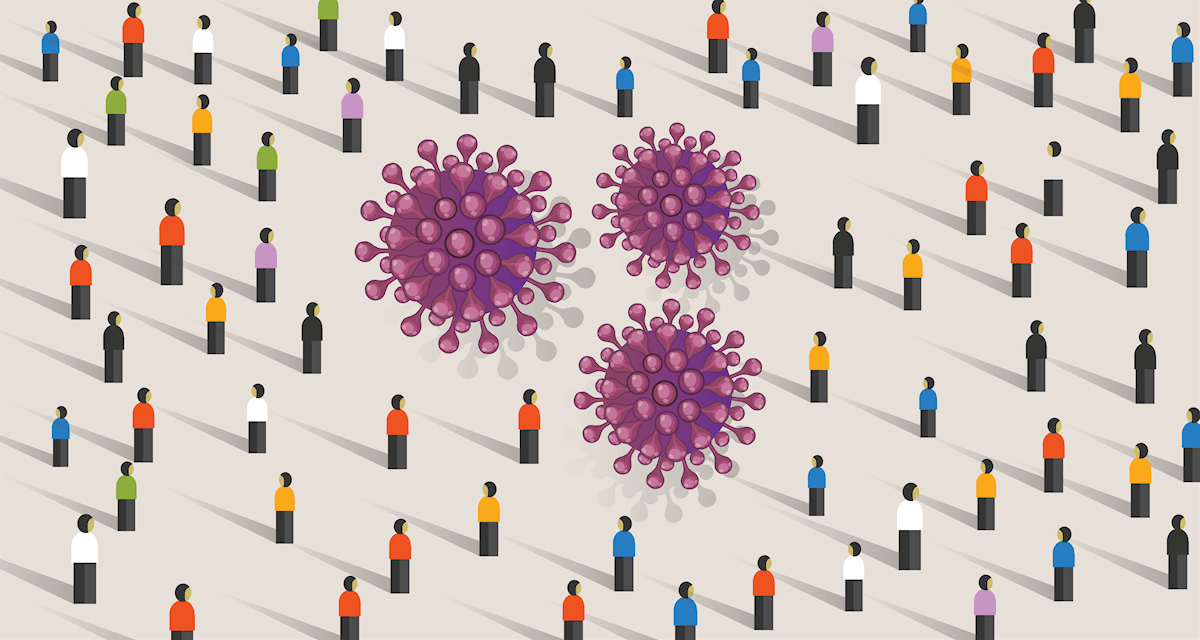
ในการถกเถียงทางวิทยาศาสตร์ WHO ยอมรับว่าในกรณีของเชื้อไวรัส COVID-19 อาจะเกิดการแพร่กระจายในอากาศได้ในสถานที่ปิดหรือไม่มีการระบายอากาศ นักวิทยาศาสตร์ทั่วโลกกำลังมองหาข้อมูลเนื่องจากอาจส่งผลกระทบต่อหลายปัจจัย จากผู้ติดเชื้อในระยะใกล้ชิดผ่านทางละอองหรือการสัมผัสผู้ติดเชื้อโดยตรงและวัตถุที่ปนเปื้อน
ภาพอินโฟกราฟิก shared by BBC อธิบายความแตกต่างระหว่างสารคัดหลั่งและการแพร่กระจายทางอากาศ ละอองที่เข้าสู่ระบบทางเดินหายใจมีขนาดเล็กมาก ไม่สามารถมองเห็นด้วยต่เปล่าตั้งแต่อนุภาค 0.5 ไมครอน - 15 ไมครอน ตามมาตรฐานที่ช่วยบรรเทาภายในระบบกรองอากาศวิ่งที่สำคัญคือ ปรับใช้แผ่นกรองอากาศให้เหมาะสมละอองเหล่านี้บางส่วนมีน้ำหนักมากที่จะลอยอยุ่ในอากาศและตกลงบนพื้น
นักวิทยาศาสตร์สังเกตุว่า 95% ของอนุภาคมีขนาดเล็กกว่า 100 μm (μm = micrometer), ซึ่งเป็นอนุภาคที่มีขนาดเล็กกว่า 1 ไมครอน. ขนาดของสารคัดหลั่ง 0.5–20.0 μm ที่ลอยอยู่ในอากาศมีแนวโน้มที่จะทำให้เกิดการติดเชื้อทางระบบทางเดินหายใจเนื่องจากขนาดของไวรัส (เส้นผ่านศูนย์กลาง 0.015 µm ถึง 0.4 µm),จึงถูกจัดหมวดหมู่ประเภทเดียวกับ PM1
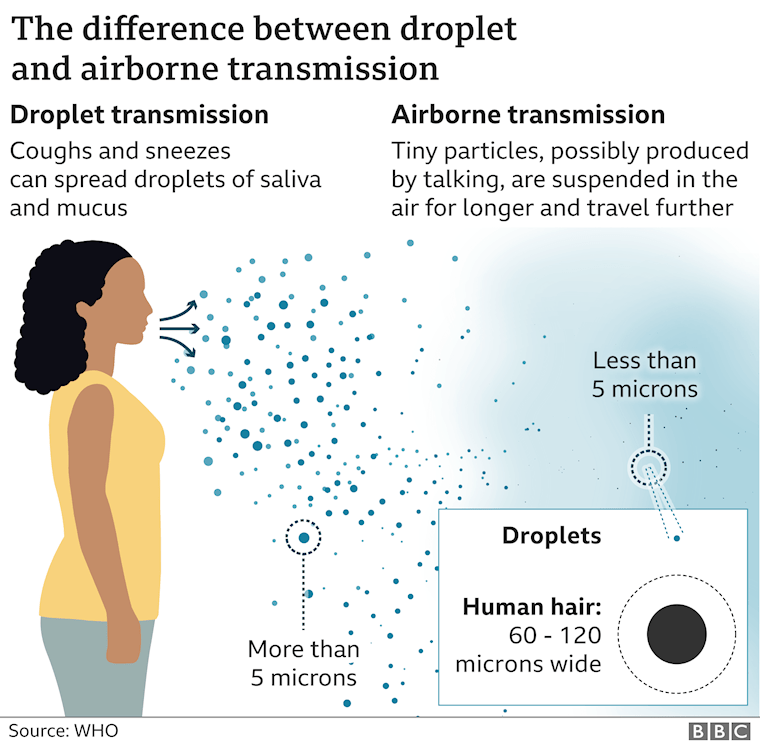
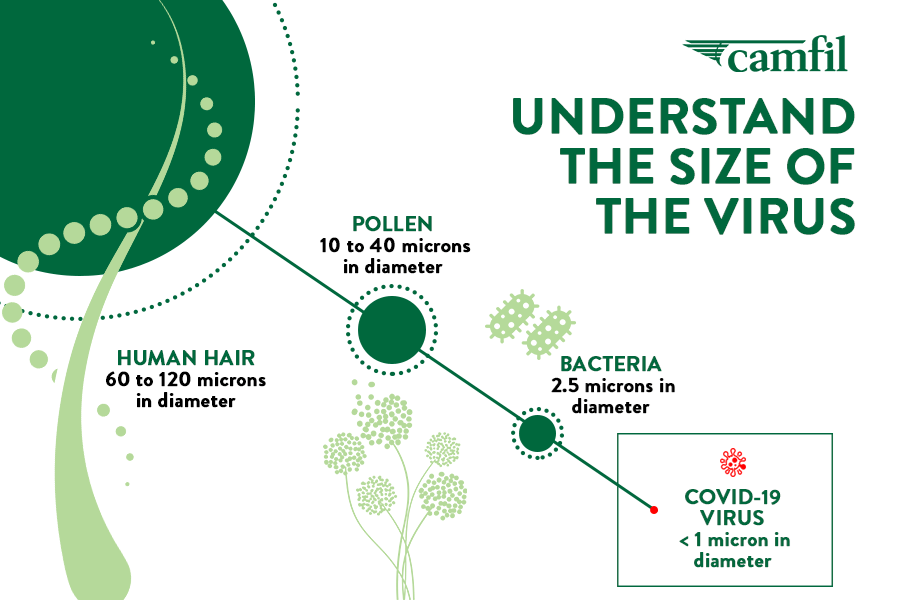
Improving the ventilation system, managing the airflow and air filtration is the key to reduce the spread of COVID-19 in the indoor environment.
Where possible determine if the flow of outside air can be increased and turn off or reduce the recirculation air. Modifications in the HVAC system such as installing an airflow control system that will enable the fresh air supply to be maximized and the recirculation air to be minimized. If you need to use recirculation air, upgrade to high efficiency filters that are capable of capturing particles <1 micron in size (ISO ePM1 80% and above). Along with this ensure that your indoor fan motor in HVAC has sufficient power to handle the upgrade.
The high efficiency air filter can trap the particles responsible for the spread of the virus and they become inactive while captured on the filter membrane. Upgrading to high efficiency filter depends on the pollution level in the air. Higher quality filter may require a pre-filter to ensure the reasonable operational life time and fans should be able to handle the increased pressure loss over the filter step.
Camfil recommends an ISO ePM1 filter class according to ISO 16890 (ePM1 80% or higher) for HVAC systems with air handling units (AHUs), however, due to increased resistance to airflow and space restrictions, this may not be practical for every commercial HVAC system. Consider using air cleaners for fast and easy retrofit in case of a sub-standard ventilation system for improvement in air filtration. It is also a way to rapidly boost the air quality of an already good functioning system when there is an increased risk that demands even better protection. An air filtration expert can do the proper analysis and suggest the solution based on the indoor enlivenment and existing HVAC system to minimize the impact of harmful pathogens such as COVID-19.
The efficiency of high performance air filters (HEPA filters) is measured at MPPS (most penetrating particle size) which means this is the lowest efficiency of the filter. For smaller or larger particles that filter will perform even better. MPPS is typically between 0,1-0,2 micrometers in size. Bacteria and viruses are often smaller than that but typically attach themselves to larger particles. It’s also important to understand that air filters do not actively kill living organisms. They capture and hold them within the matrix of the filter. Once the virus is captured it will stay in the air filter and eventually dry out and die (refers to as inactive). Studies on COVID-19 virus indicates that the virus does not survive longer than 3 days on open surfaces. The following diagrams will explain the efficiency of the selected air filtration in the fight against submicron particles such as vehicle emissions, bacteria, viruses, and other harmful pollutants.
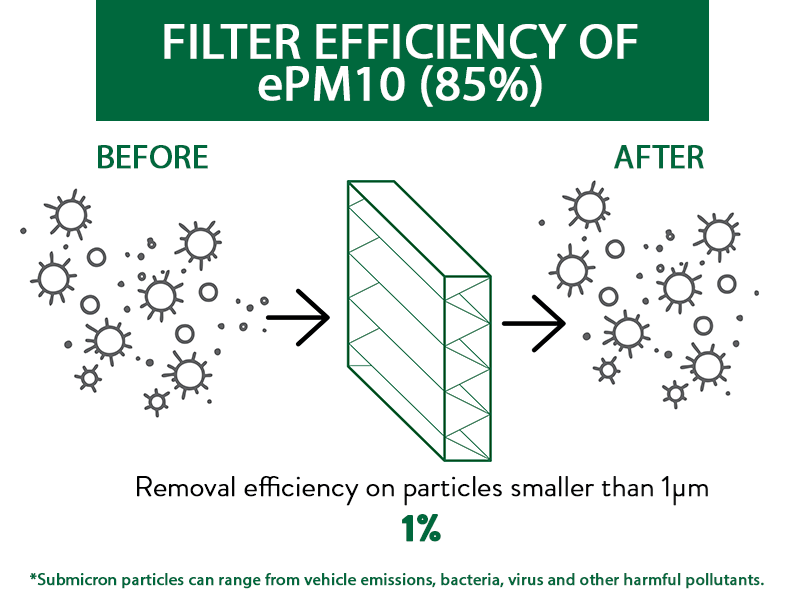
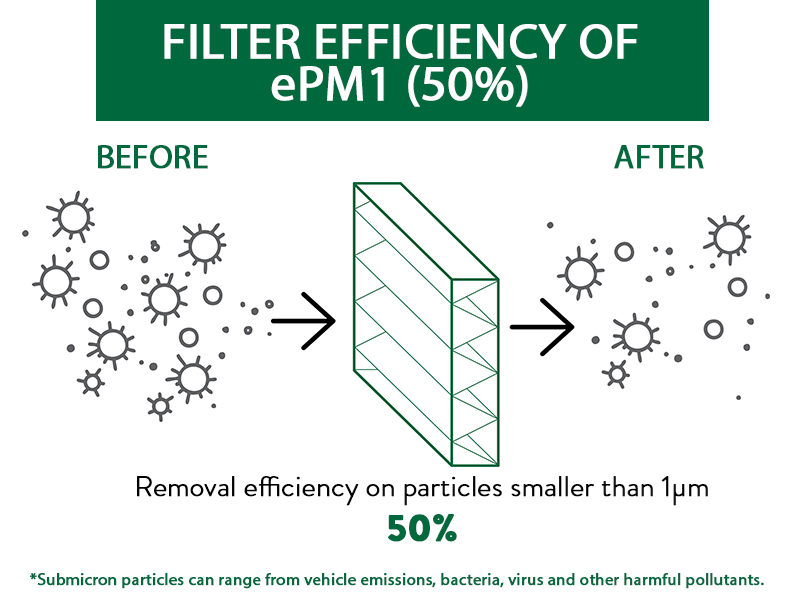
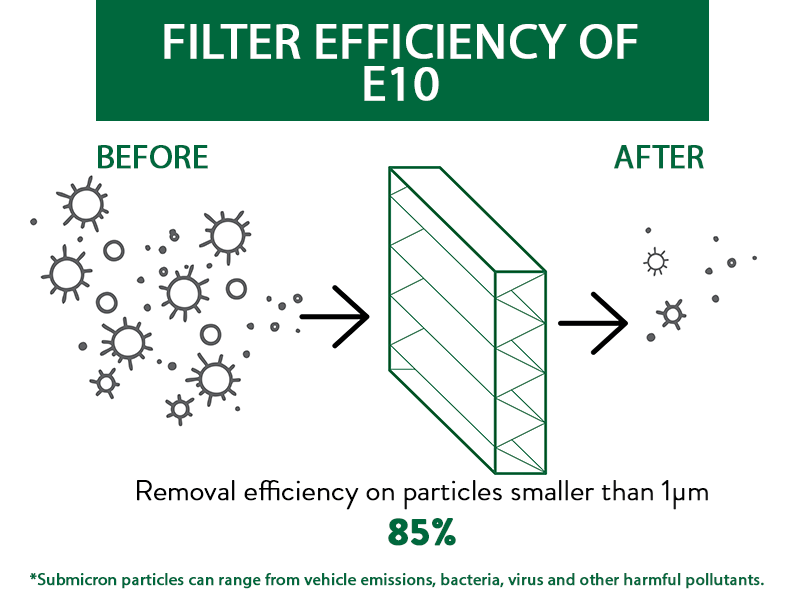
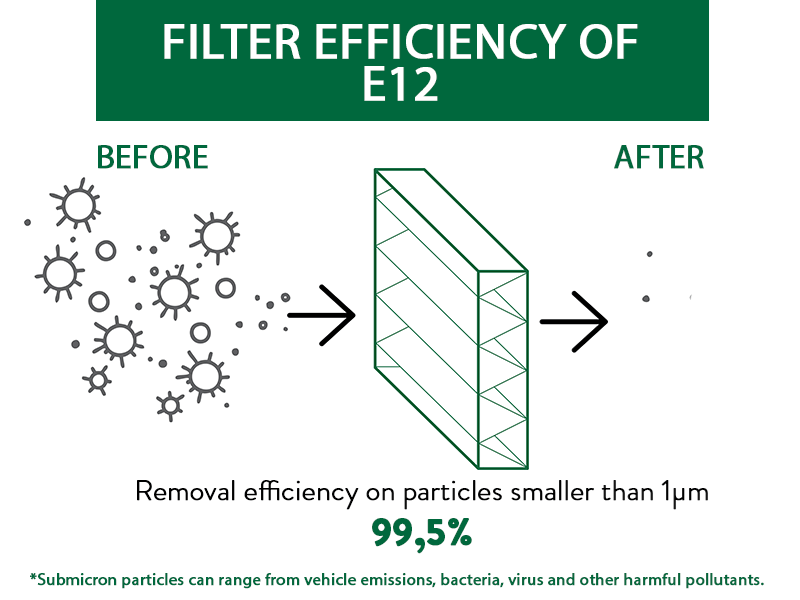
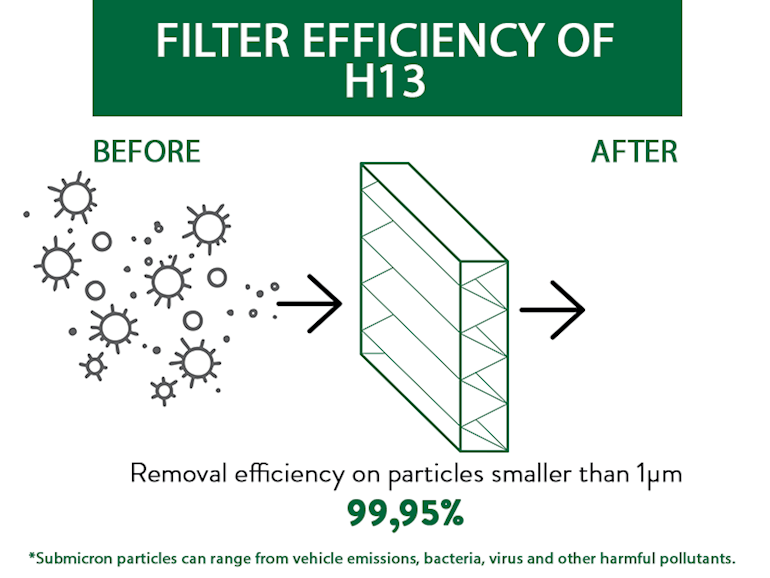
Compare to other filter classes, H13 filter class air filters captures 99.95% of contaminants classified as submicron particles such as the COVID-19 virus. Along with upgrading to a more efficient filter class, ensure that the supplier you chose can provide the performance test reports. Also, consider portable in room air cleaners or purifiers in reducing the viral load where supplementary localized control is required.
High humidity leads to the loss of the infectious influenza virus from simulated coughs. An indoor humidity level of between 40-60%RH has been scientifically proven to combat airborne flu infections. This ideal humidity level shortens the time airborne flu remains infectious.
An upgraded HVAC system with high efficiency filters to minimize the impact of harmful pathogens in the indoor environment is a must in case of droplet and airborne transmission. If the transmission is airborne, optimized airflow in the HVAC system wherever possible is crucial. To discuss your air filtration requirement and assess your indoor air quality situation with Camfil expert, please locate the nearest office and connect with our specialist.
Can HVAC systems help prevent transmission of COVID-19? - Published by McKinsey
WHO rethinking how COVID-19 spread in the air – Published by BBC
High humidity leads to loss of infectious influenza virus - Journal
Transmission of COVID-19 virus by droplets & aerosols – Study & Journal